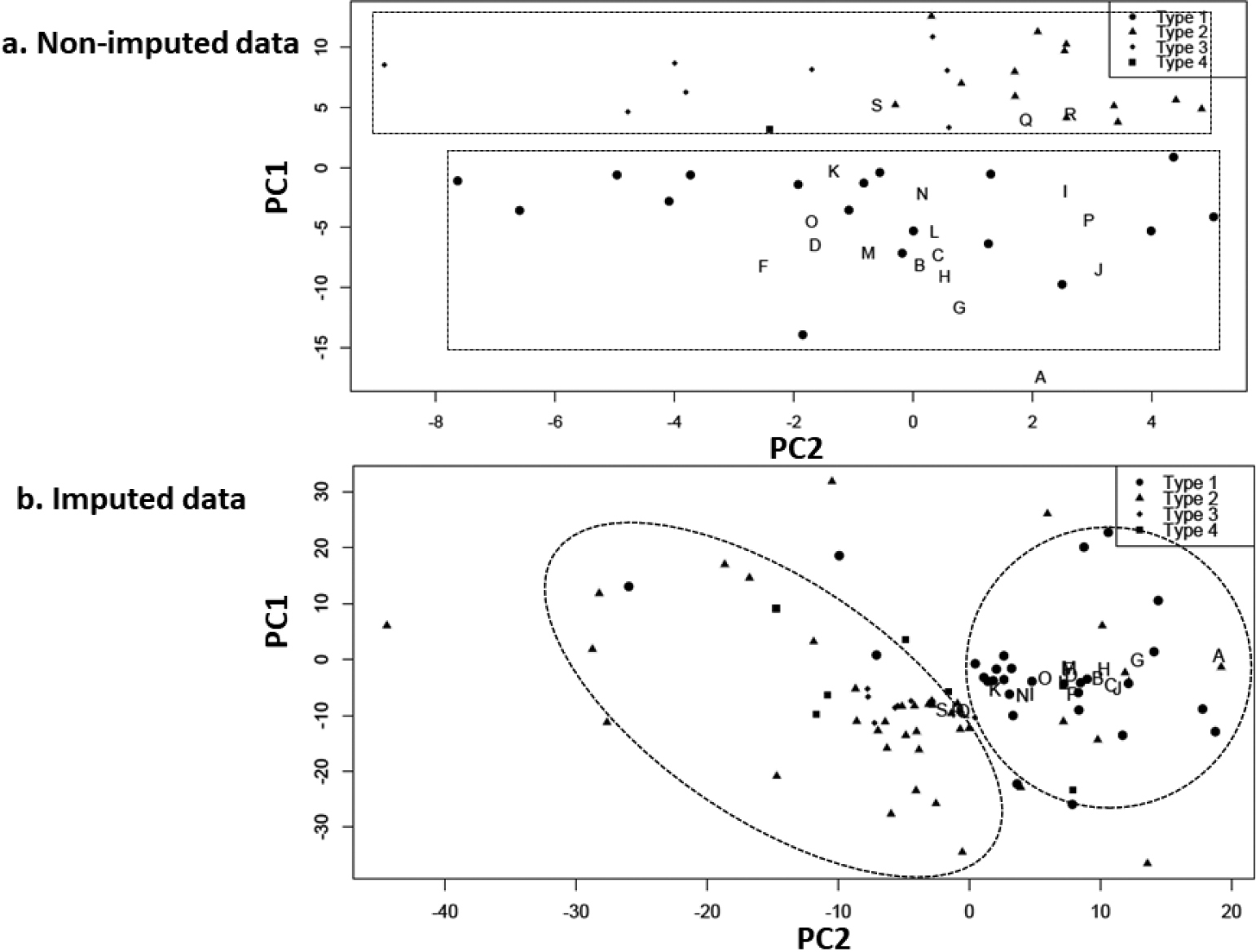
|
||
|
Principal Component Analysis (PCA). Based on their morphological similarities all specimens at the author’s disposal were manually grouped into four types, Type 1 to Type 4; a. PCA for non-imputed dataset (N = 59) using ‘prcomp’ command in R employing the normalized data; b. PCA for the imputed data set (N = 105). Note Type 1 (Circle) – with large umbilicus (U/D: 40 to 25%), compressed whorl section (H/T: 1.3–1.8) and acute ventral region. They are microconch (m); Type 2 (Triangle) – with small umbilicus and (U/D: 26 to 18%), compressed whorl-section (H/T: 1.35–2.0) and acute ventral region. They are macroconch (M); Type 3 (Diamond) – small-sized specimens, juvenile of types 1 & 2. The overlap of types 3 and 1 & 2 in the plot suggests that they belong to same taxonomic group. Type 4 (Square) – they are same as Type 2 but with preserved crescentic ribs on flanks. |